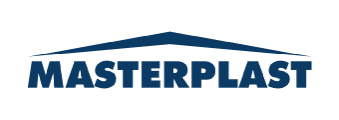Introduction
Masterplast Nyrt. is a leading insulation manufacturer operating in 10 countries across Central and Eastern Europe. Its wide-ranging production, from nonwoven textiles to EPS, XPS, and roof foils, requires careful coordination of environmental, health, and safety (EHS) activities across locations.
In 2023, Masterplast made a strategic decision to digitalize and unify its EHS workflows. The goal: to replace fragmented, Excel- and email-based practices with a scalable and transparent system that supports legal compliance, data-driven reporting, chemical oversight, and equipment management. The company chose denxpert’s modular EHS platform, where each solution—from legal monitoring to chemical safety—works independently yet seamlessly within a shared ecosystem.
The Challenges
Decentralized Tools and Duplicated Efforts Across Sites
Before the transition, Masterplast teams relied on a mix of tools and formats, combining Excel sheets, emails, printed documents to manage EHS obligations. While compliance and documentation tasks were actively performed, the lack of an integrated system made collaboration difficult. Information moved slowly across departments and locations, leading to repeated requests for the same data, overlapping responsibilities, and longer lead times to prepare for audits or project deliverables.
Human-Driven Processes and Limited Traceability
Environmental and safety data including waste volumes, energy use, and occupational safety indicators were mostly handled manually. Although the processes were in place, the absence of centralized structure made it challenging to verify data accuracy or build timely reports, especially when different departments used different templates or file versions. The manual nature of the work meant a higher risk of human error and inconsistencies.
Complex Chemical Approval Flow Without Full Transparency
Chemical substance requests and safety data sheet (SDS) submissions followed a process, but required multiple email exchanges and file uploads to various stakeholders. While approvals were managed responsibly, there was no centralized workflow or searchable registry. This made it harder to trace the status of requests, ensure visibility across departments, or extract chemical usage data for regulatory or ESG purposes.
Safety Event Reporting Lacked Workflow Integration
Incident reporting and investigation processes were functional, but not standardized across locations. Reports were shared through various formats, making it harder to consolidate cases, identify trends, or follow up systematically.
Lifting Equipment Documentation Spread Across Sites
Lifting equipment records, including inspection logs and certificates, were kept locally, typically in separate folders or systems. This made it difficult to monitor inspection schedules centrally or quickly retrieve documentation during internal checks or external audits.
....
Download the full case study to learn, how denxpert's platforms gave a solution for Masterplast's challenges!


























.png)






